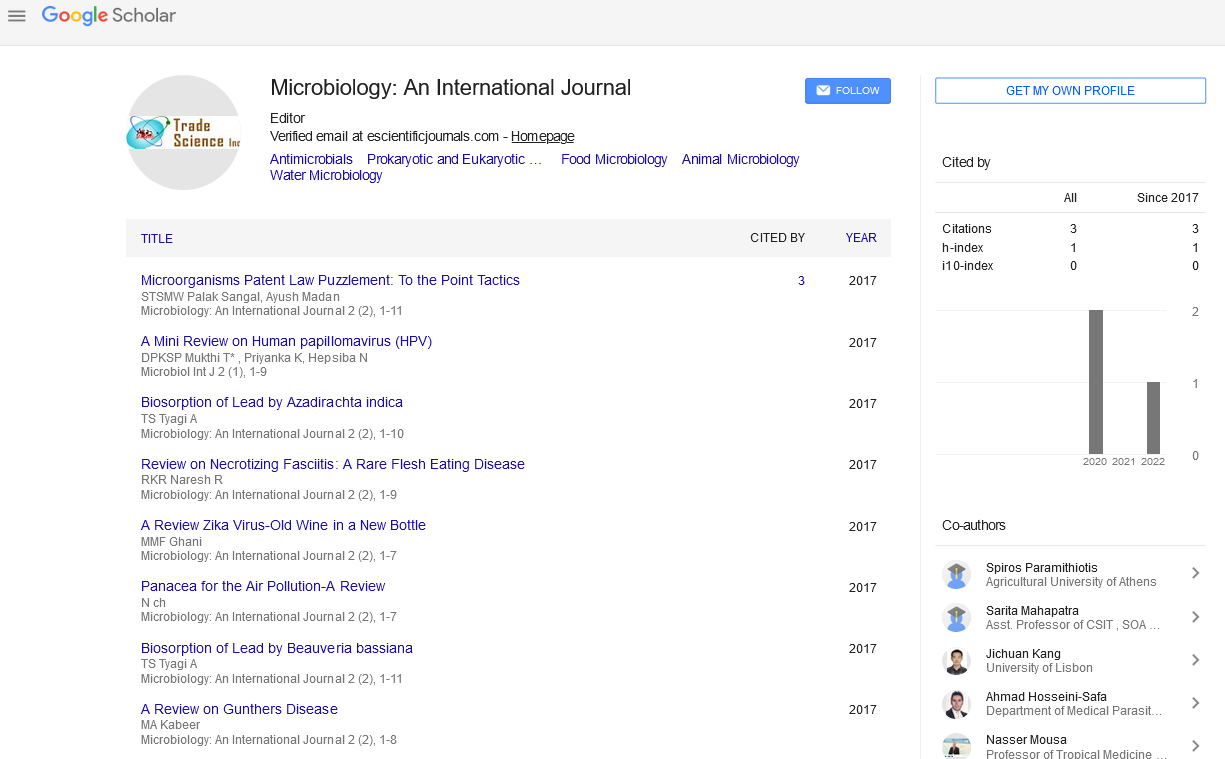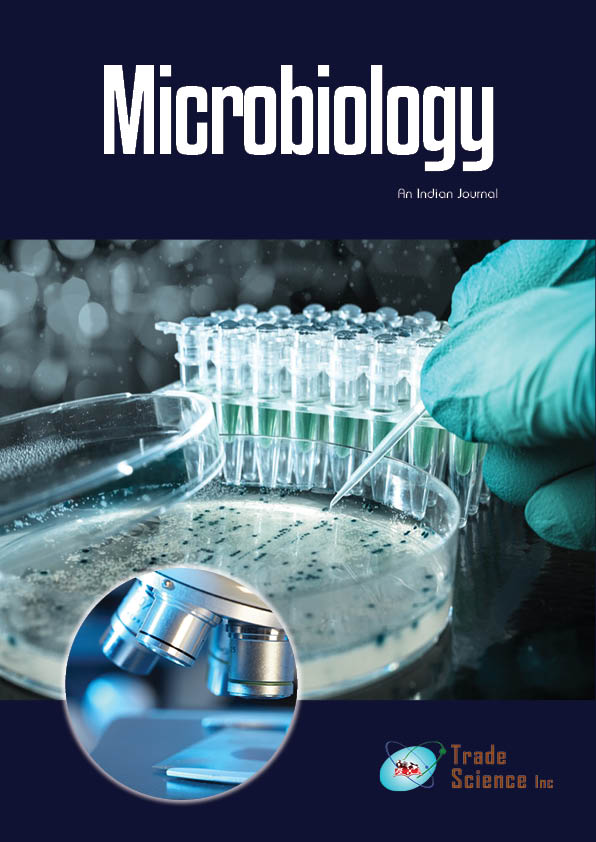Short commentary
, Volume: 3( 1) DOI: 10.37532/tsmy.2021.3(1).111Salmonella Gene Targets Used for Culture-Independent Diagnostic
- *Correspondence:
- Matthias Dudle, Department of Food Science, The Pennsylvania State University, University Park, Pennsylvania, USA E-mail: dudleymstate.d@edu
Received: July 29, 2021; Accepted: August 16, 2021; Published: August 23, 2021
Citation: Dudley M. Salmonella Gene Targets Used for Culture-Independent Diagnostic. Microbiol Int J. 3(1):119.
Abstract
Salmonella is a diverse genus that causes high-burden food- and water-borne gastroenteritis all over the world. Single nucleotide polymorphisms (SNPs), indels, and genomic rearrangements within primer and probe can impair the sensitivity and specificity of PCR-based culture-independent diagnostic testing (CIDT) methods for Salmonella, which rely on a highly conserved gene target primer and probe sequences. The significance of prospectively obtained genomic data for confirming CIDT targets is demonstrated in this paper. The genomes of Salmonella isolates collected and sequenced prospectively in Australia were used. To determine nucleotide dissimilarity, the sequences three Salmonella CIDT PCR gene targets (ttrA, spaO, and invA) were systematically examined. The analysis of different serovars and MLST types revealed differences within and between PCR gene targets ranging from. The ttrA target gene employed by the Roche LightMix has the lowest average dissimilarity, however entropy across the gene suggests it may not be the most stable CIDT target. While the benefits and drawbacks of substituting bacterial culture with molecular assays are still being debated, the expanding amounts of genomic monitoring data allow for periodic regional appraisal and confirmation of CIDT targets against both common and new serovars. While the advantages and disadvantages of using molecular assays instead of bacterial culture are still being contested, the growing amount of genomic monitoring data allows for frequent regional appraisal and confirmation of CIDT targets against both common and new serovars.
Introduction
Salmonella is the most common cause of foodborne gastroenteritis worldwide, with high morbidity, mortality, and economic costs. Salmonella is a large genus of zoonotic organisms with over a hundred serovars. Salmonella enterica and Salmonella bongori are the two primary species in the Salmonella genus. S. enterica is the most harmful of the bacteria the genome contains both Salmonella Pathogenicity Islands 1 and 2 (SPI1 and SPI2) [1]. Enterica (Subspecies I), salamae (II), arizonae (IIIa), diarizonae (IIIb), houtenae (IV), and indica (V) are the six subspecies of S. enterica (VI). Salmonella enterica subspecies enterica serovar Typhimurium (STM) is the most common cause of non-typhoidal Salmonella (NTS) infections, with S. enterica subspecies enterica serovar Typhimurium (STM) being a main source of foodborne outbreaks in many countries. Other serovars, including some that are peculiar to Australia, have been reported as causal agents of NTS. Salmonella serovar prevalence varies greatly among continents. In Europe and North America, for example, S. enterica subspecies enterica serovar Enteritidis is the most usually detected serovar, whereas in Australia and New Zealand, STM predominates [2,3].
Foodborne Salmonella has such serious public health, food safety, and trade ramifications that it necessitates a very sensitive and specialised surveillance system to enable timely detection and characterisation of outbreaks [4]. The adoption of culture-independent diagnostic testing (CIDT) as the front-end method of detecting Salmonella in stool samples, and the often total replacement of traditional culture for Salmonella, has brought numerous problems to public health laboratory surveillance. The reliance of all current CIDT platforms on a single gene target for the detection of a diverse disease like Salmonella has prompted serious concerns about these CIDTs' ability to detect unusual serovars or developing variations [5].
References
- 1. Kirk MD, Pires SM, Black RE, et al. World Health Organization Estimates of the Global and Regional Disease Burden of 22 Foodborne Bacterial, Protozoal, and Viral Diseases, 2010: A Data Synthesis. PLOS Med. 12, e1001921 2015.
- 2. Ashbolt R, Kirk MD. Salmonella Mississippi infections in Tasmania: The role of native Australian animals and untreated drinking water. Epidemiol Infect. 2016;134:1257-1265.
- 3. Iveson JB, Bradshaw SD, Smith DW. The movement of humans and the spread of Salmonella into existing and pristine ecosystems. Microbiol Aust. 2017;201-203.
- 4. Centers for Disease Control and Prevention (CDC). National Enteric Disease Surveillance: Salmonella Annual Report, 2016.
- 5. The European Union summary report on trends and sources of zoonoses, zoonotic agents and food?borne outbreaks in 2017.

